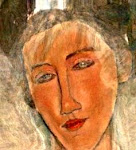Our
personal tradition is to visit a city or an island to celebrate our birthdays. In
2015 we have done both on the same trip. Not one, but TWO cities, and not an
island, but the Venetian group of islands. And the whole is tied up with the
common thread of music.
We started off in Cremona, known worldwide for its violin makers (Stradivari, Guarneri, Amati etc.), but rich in many other treasures as well. First and foremost its gorgeous Cathedral square, Piazza Duomo, a wide quadrangle around which stand three impressive landmarks: the Duomo, Torrazzo and the Baptistery.
The Duomo
has a magnificent pink and white marble façade in exquisite Romanesque style; construction
began in the early 12th c. and continued till the end of the century.
Later additions were made in various periods – Gothic, Renaissance and Baroque.
Two large stylised lions are crouching on either side of the narthex (lobby).
They attract in particular children, who enjoy straddling them, and people
taking selfies.
To the left of the cathedral rises the “Torrazzo” bell tower. It is the tallest and oldest bell tower made of brickwork still standing. The building dates from the 13th c. and is approximately 112 m high. It is possible to climb the 504 steps to the top for a fee. On the front of Torrazzo is a large astronomical clock representing the constellations built in the 16th c. (I have found it impossible to tell the time or even the date…).
The piazza, like most of the historical town centre, is a pedestrian precinct, but it fills up with visitors on weekends, making it very lively.

As you would expect, there is also a Violin Museum www.museodelviolino.org , a large structure with thousands of priceless exhibits, interactive displays, an auditorium and a number of seminars being held all year round. You have the opportunity to hear the voices of some of the most precious pieces being played by great artists. The museum features not only violins, but violas, cellos and contrabasses as well. Bizarrely, this wonderful structure is housed in one of Cremona’s least appealing, but most functional, buildings, with a modern sculpture park in front.
(Continues to Part Two: Venice)
DaniBlue
9th May 2015


















No comments:
Post a Comment